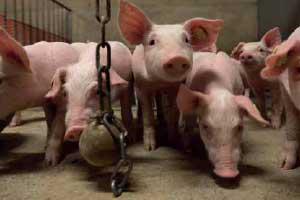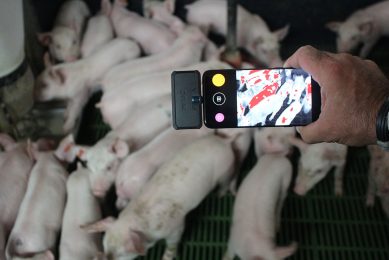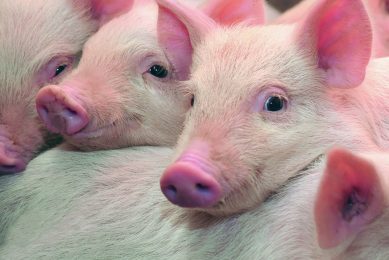Eight useful ways to replace antimicrobial agents

Considerable experiences have been accumulated since the ban on antimicrobial agents came into effect in the European Union. Since then, numerous additives have been tested, whilst management procedures have been altered to reflect the new reality. What options are available for producers? By Dr Ioannis Mavromichalis, Ariston Nutrition, Spain
Not everything has shown to be able to even partially replace the beneficial effects of antibiotics. In some cases, high therapeutic dosages of antibiotics superseded lower dosage of growthpromoting ones. Nevertheless, in the end, nutritionists have obtained considerable insight on what works and what it does not, even if not all replacements are equally effective in each single farm. Perhaps, the most important lesson learnt is that no single technology, feed additive, or management practice can promote growth in young pigs today as cost-effectively as antimicrobial agents. Instead, a synergy of several additives and management practices appear to be working the best in promoting growth in nursery pigs by safeguarding their intestinal health against opportunistic pathogenic bacteria. Here, it merits a mention of the fact that feed cost is currently higher in antibioticfree programmes, because this technology is still under development and relevant additives have a long way to become inexpensive commodities.
For the benefit of those production systems that consider adopting or changing their in-feed growth-promoting strategy, a list of common approaches encountered in many successful antibiotic-free nursery programmes is offered below for consideration. This list is nothing more than a reference for an in-depth discussion and analysis with a nutritionist and a veterinary team that (should) attend each farm.
1 Overall health status
Any antimicrobial agent will be more effective under low(er) health condition such as, for example, in continuous-flow nurseries. Improving health by improving farm biosecurity protocols, adopting all-in all-out management procedures, enhancing cleaning and disinfecting methods, and most importantly, stabilising sow herd health are all well-known practises that reduce the need for any antimicrobial agents.
2 Weaning age
In most EU countries, weaning age is now practised between 24 and 28 days, whereas producers in North America usually wean pigs around the third week of age. Since a long time ago, research and experience have shown that with increasing weaning age, piglets are able to cope better with the usual post-weaning trauma. They experience increased feed intake, and better growth, largely because of longer exposure to creep feed and better development of the immune system. It is no coincidence that creep feeding is practised with renewed vigour in most EU farms now.
3 Feed intake
The critical role of feed intake on the maintenance of gut health after weaning is well known. Research has established that even after a short period of starvation, the gut becomes more permeable to antigens (such as those in soybean meal) and more susceptible to bacterial attachment. Diarrhoea then develops either as a hypersensitivity reaction to antigenic proteins or from endotoxins and exotoxins due to bacterial damage caused by pathogens such as Escherichia coli.
4 Nutrient digestibility
Nutrients, and especially protein, that remain unabsorbed at terminal ileum become substrate for bacterial proliferation in the large intestine. In particular, Escherichia coli thrives on undigested protein. Of course, a large bacterial load not only deprives nutrients from the animal but it also harbours potential pathogenic strains such as colibacillus, Salmonella, and clostridium. Thus, as pathogens require protein to grow and multiply, it makes sense that by reducing total dietary protein and by increasing its digestibility, bacterial proliferation will be markedly impaired. In following this method, it is important to offer a well balanced amino acid profile to the animal (based on crystalline amino acids) to ensure maximal lean deposition and growth.
5 Enzymes
Certain enzymes that breakdown anti-nutritional factors, such as non-starch polysaccharides in cereals, may also be beneficial in antibiotic- free programmes. Their mode of action is indirect in that they reduce the availability of substrate (undigested feed) to microbes. Proteolytic enzymes may also benefit piglets by enhancing protein digestibility, but less research is available on this aspect. Nevertheless, there is some evidence suggesting that as enzymes tend to reduce gut viscosity, pathogenic bacterial proliferation is hampered due to increased digesta fluidity. The whole topic of enzymes versus gut bacteria is currently not as clear cut as would be desired, but it certainly merits further attention.
6 Organic acids
As most pathogenic bacteria are acid-intolerant, gastrointestinal acidification with in-feed organic acids may actually halt or even reverse microbial growth in the stomach. Certain organic acids that can reach the small intestine in an undissociated form can be absorbed by bacteria and kill them. Which organic acids to use is currently one of the most debated topics in piglet nutrition. Equally debated is the question whether one acid suffices or a blend works best. In conjunction with organic acids, some plant extracts with antimicrobial and antiviral properties have been shown to be working quite effectively.
7 Probiotics and prebiotics
Adding beneficial live or sporulated bacteria in piglet feed is also an alternative strategy in antibiotic-free programmes. Most commercial products include one or multiple species of lactobacilli and bifidobacteria, although the list is not exhausted with these two examples. If pelleting is expected to reduce the effectiveness of these products, then sporulated preparations can offer advantages, although modern products tend to be more heat resistant than older generation products. In any case, selected strains must be acid-resistant so that they can be combined with dietary acidification. It is also appreciated today, that it is not enough to provide beneficial strains of bacteria, but in addition, sufficient bacterial ‘food’ should also be included.
Such nourishment is in the form of non-digestible, yet fermentable, sugars that can promote proliferation of beneficial bacterial populations, such as lactobacillus. Mannan-, transgalacto-, and fructo-oligosaccharides are among the most popular prebiotics. Some nutritionists appear to prefer purified preparations, but functional fibres (prebiotics) can be obtained from wholesome ingredients such as sugar beet pulp, apple pomace and chicory pulp.
8 Immunoglobulins
Immunoglobulins from plasma or hyperimmunised spraydried eggs (from hens hyperimmunised against certain piglet diseases) improve feed intake and growth postweaning by safeguarding piglet intestinal health. Immunoglobulins are the most potent natural defence mechanism against diseases, and as such, further supplementation at a critical stage (weaning) aims at supporting and enhancing native immunity.
In conclusion
Currently, there is no single additive or management practice to replace antibiotics. It is highly unlikely such product or method will be available soon for commercial application. Until then, a blend of practises offers the best alternative, but always at higher cost.











